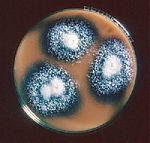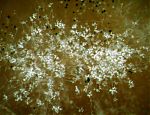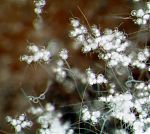Dispira
DISPIRA van Tieghem, 1875 (Ann. Sci. Nat., Bot., Sér. VI, 1:160).
Sporangiophores erect, simple, terminate in a sterile apex and bearing fertile branches laterally or branching apically to form fertile branches that are coiled or straight to curved. Each fertile branch system consists of a main branch that terminates in a nonexpanded or inflated apex that bears the fertile head and lateral branches that terminate in sterile spines. Fertile apex bears several 2-celled, simple or branched, sporiferous branchlets that produce two-celled merosporangia. Sporangiospores more or globose to ellipsoid, smooth-walled, remaining dry at maturity. Zygospores more or less globose, wall thick, hyaline, ornamented. Haustorial parasites of Mucorales and Ascomycetes..
Type species: D. cornuta.
Species of Dispira:
D. cornuta van Tieghem, 1875 (Ann. Sci. Nat., Bot., Sér. VI, 1:160).
D. implicata Misra & Lata, 1979 (Mycotaxon 8:272).
D. parvispora R.K. Benjamin, 1963 (Aliso 5:281).
D. simplex R.K. Benjamin, 1959 (Aliso 4:387) emend. R.K. Benjamin, 1961 (Aliso 5:13).
Dispira currently contains four species, two that are parasites of Mucorales, D. cornuta and D. parvispora, and the other two, D. implicata and D. simplex, that are parasites of the ascomycete genus Chaetomium. All species only have been isolated from dung. Dispira simplex was not grown in culture when it was described (Benjamin 1959) but its host preference was reported two years later (Benjamin, 1961).
Bibliography
Benjamin, R.K. 1959. The merosporangiferorus Mucorales. Aliso 4:321-433.
Benjamin, R.K. 1961. Addenda to “The merosporangiferous Mucorales†Aliso 5:11-19.
Benjamin, R.K. 1963. Addenda to “The merosporangiferous Mucorales†II. Aliso 5:273-288.
Misra, P.C., and K. Lata. 1979. Studies on Dimargaritaceae (Mucorales) II. A new Dispira parasitic on ascomycetous hosts. Mycotaxon 8:372-376.
Thaxter, R. 1895. New or peculiar North American Zygomycetes. I. Dispira. Bot. Gaz. (Crawfordsville) 20:513-518.
Updated Feb 21, 2007



